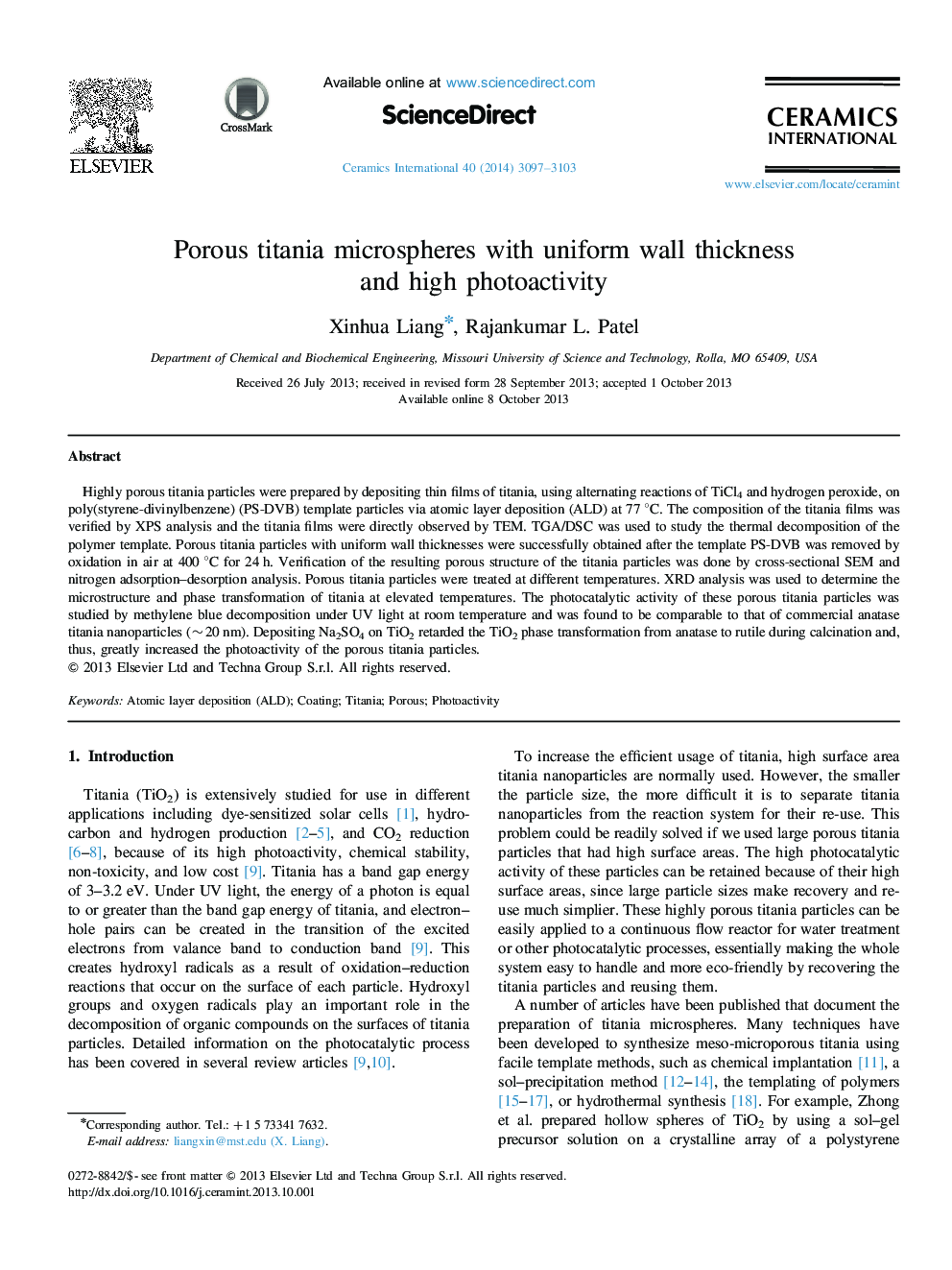| Article ID | Journal | Published Year | Pages | File Type |
|---|---|---|---|---|
| 1461361 | Ceramics International | 2014 | 7 Pages |
Highly porous titania particles were prepared by depositing thin films of titania, using alternating reactions of TiCl4 and hydrogen peroxide, on poly(styrene-divinylbenzene) (PS-DVB) template particles via atomic layer deposition (ALD) at 77 °C. The composition of the titania films was verified by XPS analysis and the titania films were directly observed by TEM. TGA/DSC was used to study the thermal decomposition of the polymer template. Porous titania particles with uniform wall thicknesses were successfully obtained after the template PS-DVB was removed by oxidation in air at 400 °C for 24 h. Verification of the resulting porous structure of the titania particles was done by cross-sectional SEM and nitrogen adsorption–desorption analysis. Porous titania particles were treated at different temperatures. XRD analysis was used to determine the microstructure and phase transformation of titania at elevated temperatures. The photocatalytic activity of these porous titania particles was studied by methylene blue decomposition under UV light at room temperature and was found to be comparable to that of commercial anatase titania nanoparticles (~20 nm). Depositing Na2SO4 on TiO2 retarded the TiO2 phase transformation from anatase to rutile during calcination and, thus, greatly increased the photoactivity of the porous titania particles.
